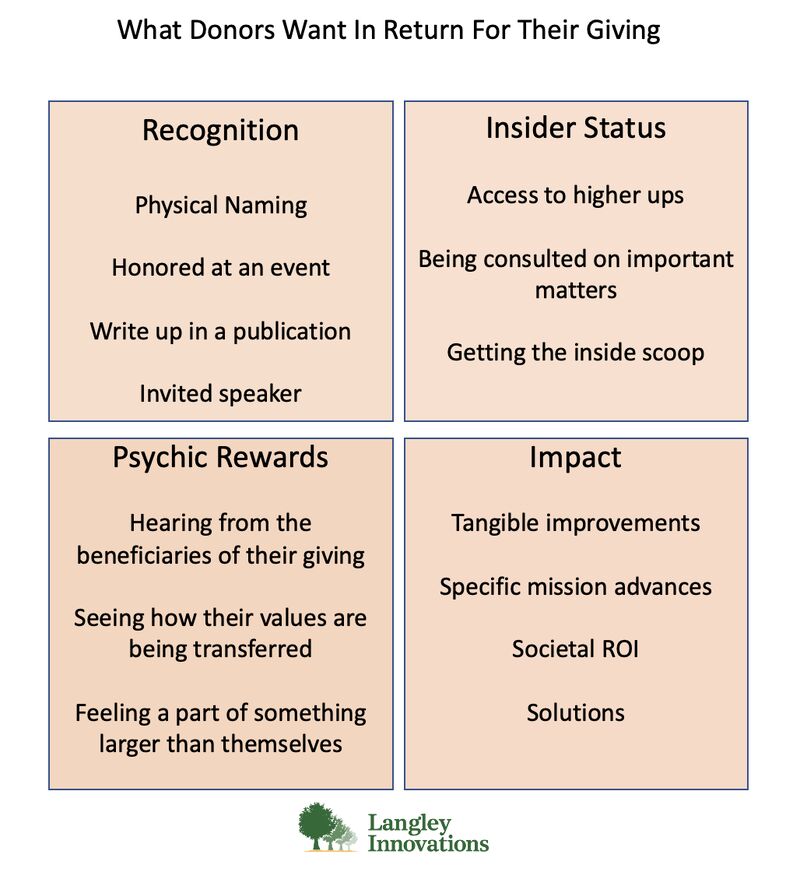Graphic from Council for Advancement and Support of Education

Graphic from Council for Advancement and Support of Education

This 65-page handbook was created by Grantmakers for Effective Organizations, as a blueprint for nonprofits wanting to understand what reviewers are thinking about as they examine requests for support, and how they assessing an applicant and its proposal for funding.
From The NonProfit Times
… Who reads, votes, rejects or rewards your effort?
First, consider the size of the staff at the funder you’re approaching. If it’s the Bill & Melinda Gates Foundation, the person-power is close to 1,800. If it’s a community foundation in a major metro area, it might be 50-75 people. For a small private grantmaking foundation, there might be a staff of 10 or even fewer.
…there is a body of information that all reviewers probably subscribe to, however informally. Some years ago, a coalition of funders created the “Due Diligence Tool” — a 65-page handbook for assessing an applicant and its proposal for funding. The publication, by Grantmakers for Effective Organizations, is a useful blueprint for nonprofits wanting to understand what reviewers are thinking about as they examine requests for support.
From: Nonprofit Tech for Good
Here’s the list. Read More online for details on each
1) Implement donation page best practices.
2) Proactively promote your monthly giving program.
3) Launch a tribute giving program.
4) Know the power of email fundraising.
5) Prioritize a matching gifts strategy.
6) Experiment with crowdfunding and peer-to-peer fundraising.
7) Sign up for Facebook & Instagram Fundraising Tools.
8) Embrace cause awareness and giving days.
9) Host online fundraising events.
10) Invest in a customer relationship management (CRM) platform.
From QGiv
Peer-to-peer campaigns are now one of the most popular fundraisers nonprofits all over the world embrace. In fact, 39% of Americans say they’ve donated to a charity based on a request from a friend or family member.
Here’s the list. Dread more detail about each, online
1. Come up with an idea that fundraisers are excited about
2. Prepare your fundraisers
3. Use branded pages
4. Incorporate social media
5. Ask your fundraisers to set personal goals (and raise them later!)
6. Gamify your event
7. Engage your fundraisers
8. Ask volunteers to use their talents to encourage donations
9. Encourage updates on their progress
10. Have a plan for retaining those first-time donors
From: Nonprofit Tech for Good
Here’s the list. Read More online for details on each
1) Set up and prioritize LinkedIn Pages in your social media strategy.
2) Post 2-3 times weekly to your LinkedIn Page and react to your followers.
3) Monitor your LinkedIn Analytics.
4) Experiment with LinkedIn Ads.
5) Engage as your nonprofit page to elevate your brand on LinkedIn.
6) Encourage current staff, board members, and volunteers to complete their LinkedIn Profiles.
7) Empower your current staff, board members, and volunteers to advocate for your nonprofit on LinkedIn.
8) Encourage executive staff to be regularly active on LinkedIn.
9) Use LinkedIn to connect with major donors, corporate sponsors, and foundations.
10) Join and participate in LinkedIn Groups.
Ever wonder what really happens to your LOI once a foundation receives it?
The Center for Civil Society recently hosted Catherine Koenen, executive director of the Gianforte Family Foundation, and Marshall J. Sana, senior program officer of the Apex Foundation, for a conversation about foundations fundraising.
Read the entire article online Link to Philanthropy Daily
Here are a few key takeaways to make sure that your foundations outreach is the best it can be.
Here Are 21 Great Picks From IP Interviews
Here are a few:
Read the rest:
Have a subscription? Link to the article
or